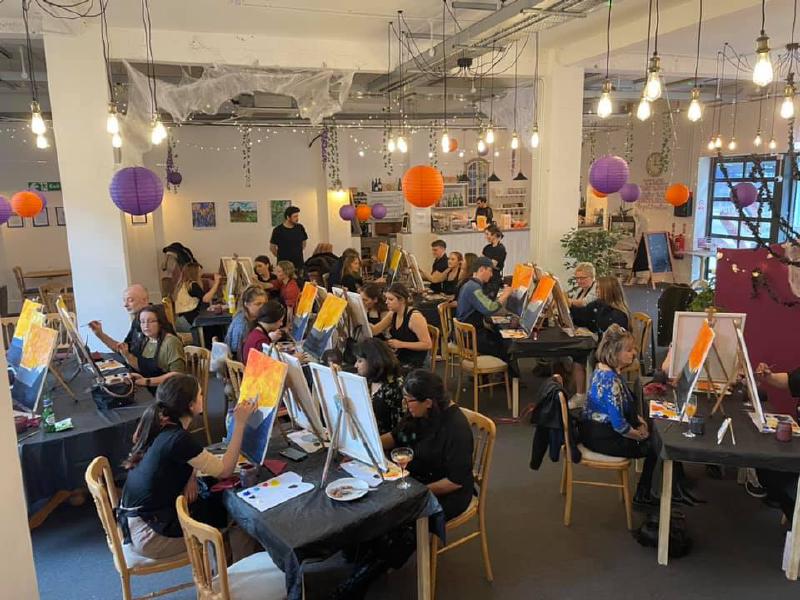Interview with Educator and Artist Charlotte about her experiences facilitating social painting events with PopUp Painting, and helping people take pride in their work. Then ideas for how environmental educators can adjust what we have kids do so that the experiences are more meaningful, and kids actually want to take home the paper we give them.
PopUp Painting: https://popuppainting.com/
Helping people take pride in their work
-
**Instead of “what is it?” ask “Could you tell me about your work?” **
- A piece of artwork doesn’t have to be anything
- They decide what is important about it
- Encourages thinking about their own work and process
-
Ask specific questions/Give specific feedback
- “How did you do this?”
- “I like how you used this technique”
- Demonstrates that you are paying attention to what they’ve done
-
Ask how they feel about their work
- “Are you proud of your artwork?”
- Help people build emotional competence
- Gentle encouragement to identify and articulate what they really like about their piece, and also what they would like to do better
Helping people give themselves constructive criticism
-
Pitfalls of “It’s great!”, “Its your own style!” etc.
- These can take the bite out of making a ‘mistake’, but can come across as patronizing/disingenuous
- It’s okay to not be happy with your work. None of us like to get things wrong, but it is important to work on being able to give yourself honest criticism. Challenge is to keep dissatisfaction with a product from becoming “I’m not an art person” or “This subject isn’t for me” etc.
-
Growth mindset and Action planning
- There is power in: I’m not good at this yet. I made a mistake this time.
- Wish, Outcome, Obstacle, Plan
- Wish this bit was better
- This is what I mean by better
- This is what is holding me back
- This is how I’m going to reach the outcome
-
Use humour * Can help people see that a mistake is not so serious * Can help twist the person’s perspective on a mistake into something positive
Designing work that kids care about
-
Make it relevant
- Explain why something is important
- Helps people buy into why they should want to take part
- Does it connect with participant’s experiences, interests, or values?
- Allow choice
- Participants take more ownership of the work
- Participants can base their work on their experiences
- Example:
- Write down what a fish needs to survive.
- If they don’t like fish or never interact with live fish. They may have no reason to care about the topic. It’s not relevant to their experience.
- Choose an animal you’d want to keep for a while to observe. What would you need to provide so it can survive?
- They get to choose an animal they are interested in/is relevant to their experience
- Scenario explains why the information is important
- Explain why something is important
-
**Make it meaningful **
- Allow them to invest time and experience the process. The product becomes a reminder of the process.
- Will the work have some impact or use?
- Example
- Listing what an animal needs
- Loses its meaning after the session. It becomes just a list of words.
- Draw a plan of the habitat you’re going to keep the creature in
- Gives kids an outlet to enjoy thinking about what an animal needs.
- Includes more of the context in the product, so it retains more meaning after the session.
- If they are very invested, they might actually use the plan to create a habitat in their garden or in a small container.
- Listing what an animal needs
-
Give the work value
- Putting work on display lets them know you value the work.
- Ask how they would like to display their work.
- Make it part of a bigger project
- Example
- Keep a tally of the animals you caught. We will talk about what you found.
- After you’ve talked about their results, if nothing else is going to be done with the results, they’ve lost their value.
- The tally of animals could become data for a later graphing exercise. The graph can be part of a poster or blog post.
- Building more connections with a piece of work helps make it more meaningful and memorable.
